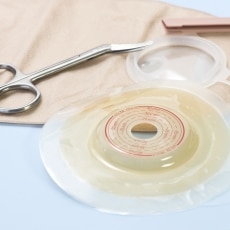
Urostomy

Summary
An ostomy is surgery to create an opening (stoma) from an area inside the body to the outside. It treats certain diseases of the digestive or urinary systems. It can be permanent, when an organ must be removed. It can be temporary, when the organ needs time to heal. The organ could be the small intestine, colon, rectum, or bladder. With an ostomy, there must be a new way for wastes to leave the body.
There are many different types of ostomy. Some examples are:
- Ileostomy – the bottom of the small intestine (ileum) is attached to the stoma. This bypasses the colon, rectum and anus.
- Colostomy – the colon is attached to the stoma. This bypasses the rectum and the anus.
- Urostomy – the tubes that carry urine to the bladder are attached to the stoma. This bypasses the bladder.
NIH: National Institute of Diabetes and Digestive and Kidney Diseases
Source: MedlinePlus, National Library of Medicine.
Information pulled from the Ostomy page.
MedlinePlus brings together authoritative health information from the National Library of Medicine (NLM), the National Institutes of Health (NIH), and other government agencies and health-related organizations.
Ostomy
American Society of Colon and Rectal Surgeons
Ostomy Surgery of the Bowel
National Institute of Diabetes and Digestive and Kidney Diseases
Listen to our
latest Podcast!


